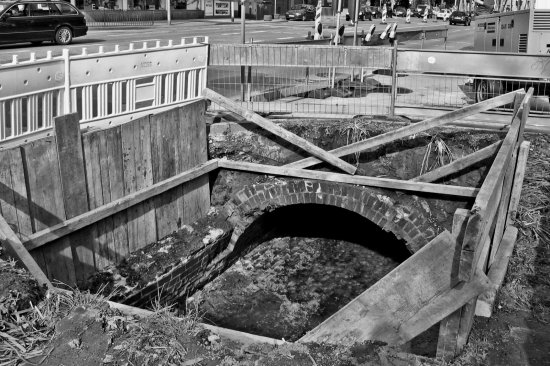City Views #81: Leineweberstrasse I
Mülheim’s Leineweberstrasse connects the Kaiserplatz with the Berliner Platz and ends at the Schloßbrücke – it’s only about 600 meters long, but one of the busiest streets of the inner city. This is the view West from the Kaiserplatz crossing – you can’t drive with your car in this direction because the street is one-way from West to East to make way for the tramway and the buses, which run both ways. The trees have only been planted about fifteen or twenty years ago and have improved the look of the street considerably, but the road looks pretty beat up here – I think that there might even be some of the original cobbles left between the rails. The Leineweberstrasse (literally Cloth Weaver’s Street) of course got its name from one of the local historical industries.
Comments off






